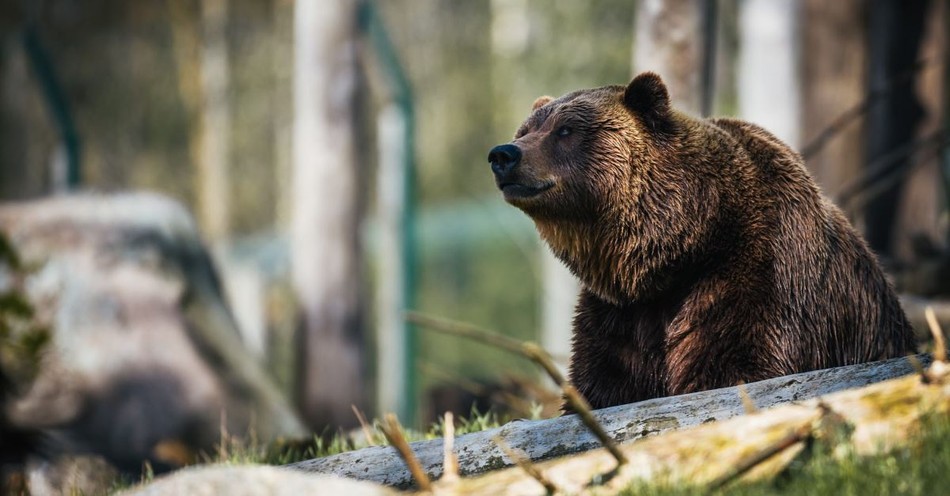A recent article in the national magazine of the Sierra Club asked the question, “Does a Bear Think in the Woods?” Beyond the clever play on the old rhetorical question, the article made the remarkable claim that the intelligence of bears, chimpanzees, and other great apes shares “many properties with our own.”
What prompted the article was a study of black bears in the northeast. A researcher, who has spent twenty-two years observing these animals in New Hampshire, told the author that bears are “like us. They judge. They punish. They have gratitude and friendship.”
The article also cited the example of a black bear in Upstate New York who figured out how to open the “latest in bear-proof cannisters.” Soon afterwards, “other local bears soon followed suit,” which prompted the question; “Did she teach them?”
Of course, no one who has owned a dog would find any of this all that surprising. That animals have what might be called feelings is undeniable, and animals are often smarter than we expect them to be. One of my friends successfully trained his Portuguese water dog to open a refrigerator and bring him a beverage. And many nature documentaries teach us that most animals spend the first part of their lives learning by emulating their mothers.
All of this can be amazing to watch, but it still leaves us a long way from saying that animals think like humans in any meaningful way. It certainly doesn’t warrant calling the woods a “neighborhood” instead of a “habitat.”
One of the things that’s behind the tendency to anthropomorphize bears, dogs, and other animals is the belief that animals and people are locked in a kind of “zero sum” game, as if the only way to assure the continued survival of animals is to deny and/or diminish how distinctly different they are from humans. In the process, man’s unique role as God’s image bearer and steward in the created order is also denied.
These denials are especially obvious in all the talk about animal “culture.” In humans, “culture” includes the “customs, arts, social institutions, and achievements of a particular nation, people, or other social group.”
No animal, no matter how smart or clever, has produced anything that remotely resembles these things. Whenever the word “culture” is used to describe animal behavior, it is always defined down to mean “socially transmitted behaviors,” such as a group of chimpanzees using a stick to dig up termites or Japanese macaques washing sweet potatoes before eating them.
Calling this “culture” only makes sense if human uniqueness has been ruled out beforehand.
It’s not only animal achievements that are puffed up in an effort to put us homo sapiens in our place. The past few decades have seen a strange new respect for Neanderthals among anthropologists.
For a century after the first discovery of Neanderthal fossils in 1856, they were regarded as brutish “ape-men.” While that assessment was wrong, what has been substituted for it is just as wrong. Just as is done with animals, many anthropologists conclude that homo sapiens must decrease and Neanderthals must increase.
And, just as is done with animals, this increase involves inflating the Neanderthals’ “cultural achievements.” Even though the evidence for things, such as art, that would indicate a capacity for complex and symbolic thought, is virtually non-existent, what does exist can reasonably be attributed to copying the behavior of homo sapiens.
And so, scratches in caves are proclaimed as art and the presence of bird bones are cited as evidence of Neanderthal fashion in a sort-of forced attempt to see evidence of “creativity” in the smallest and most improbable things.
All of this wishful thinking rejects the unique status humans have in the created order as created in God’s image and as co-creators with Him. It’s a status that no bear shares, no matter how many bear-proof containers she can break into.
BreakPoint is a Christian worldview ministry that seeks to build and resource a movement of Christians committed to living and defending Christian worldview in all areas of life. Begun by Chuck Colson in 1991 as a daily radio broadcast, BreakPoint provides a Christian perspective on today’s news and trends via radio, interactive media, and print. Today BreakPoint commentaries, co-hosted by Eric Metaxas and John Stonestreet, air daily on more than 1,200 outlets with an estimated weekly listening audience of eight million people. Feel free to contact us at BreakPoint.org where you can read and search answers to common questions.
John Stonestreet, the host of The Point, a daily national radio program, provides thought-provoking commentaries on current events and life issues from a biblical worldview. John holds degrees from Trinity Evangelical Divinity School (IL) and Bryan College (TN), and is the co-author of Making Sense of Your World: A Biblical Worldview.
Publication date: April 5, 2019
Photo courtesy: Janko Ferlic/Unsplash





.jpg)